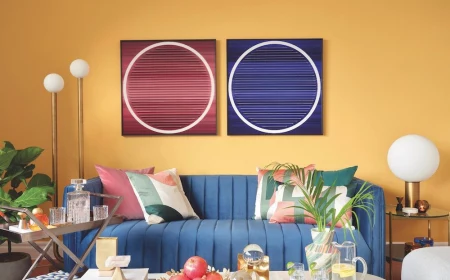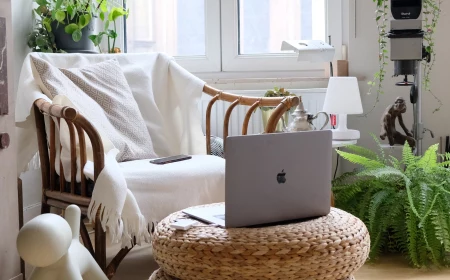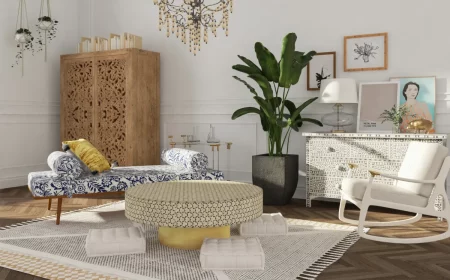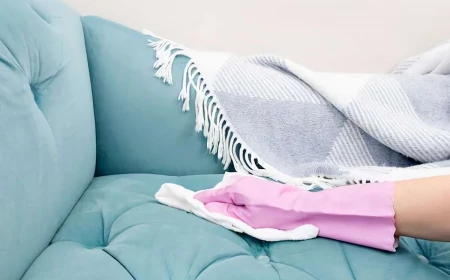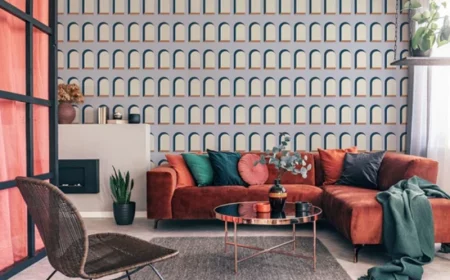How to Buy a Sofa That Doesn’t Secretly Suck: An Insider’s Guide
I’ll never forget this one client. They fell head-over-heels for a stunning, minimalist sofa that looked like it was pulled from a high-end design magazine. It was gorgeous. But just six months later, my phone rang. The cushions were pancaked, and the frame groaned every time someone sat down. Ouch.
In this article
- First Things First: The Skeleton in the Closet (or Sofa)
- The Suspension: What Keeps You From Sinking
- The Cushions: What’s Inside Really Counts
- The Upholstery: More Than Just a Pretty Face
- Budgeting: What You Should Actually Expect to Pay
- The Delivery Path: The Step Everyone Forgets
- Your Quick-Reference Sofa Shopping Guide
They made a super common (and expensive) mistake: they bought the look, not the bones. And honestly, I get it! But a sofa is the heart of your living room. It’s where you binge-watch shows, cuddle with your dog, and host friends. It’s a real investment, so it needs to stand up to real life.
So, let’s go beyond the color and style. We’re going to look at a sofa the way the pros do—from the inside out. By the end of this, you’ll be able to walk into any showroom and know exactly what you’re looking at.
First Things First: The Skeleton in the Closet (or Sofa)
The frame is, without a doubt, the most important part of your sofa. A weak frame means you’ve basically bought disposable furniture, no matter how beautiful the fabric is. I’ve seen cheap pine frames snap during a lively holiday party. It’s not pretty.
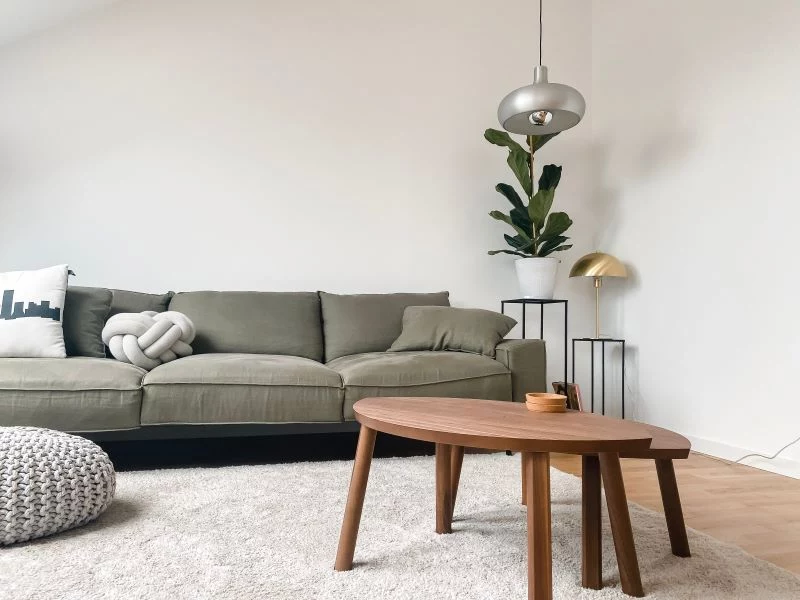
Here’s the breakdown of what’s good and what’s not:
- The Gold Standard: Kiln-Dried Hardwood. Think oak, maple, or ash. The “kiln-dried” part is non-negotiable. Why? Because regular wood has moisture. In your warm, dry house, that moisture will evaporate, causing the wood to twist, warp, or even crack. Kiln-drying removes the moisture in a controlled way, making the wood incredibly stable and strong for the long haul. This is the stuff that makes a sofa last for decades.
- The Solid Runner-Up: Engineered Hardwood or Quality Plywood. Don’t let the word “plywood” scare you off. We’re not talking about the flimsy stuff. High-quality, furniture-grade plywood (think 11 to 13 layers thick) can be extremely strong and stable. It’s a fantastic material used in a lot of great mid-range sofas, especially for creating curved or complex shapes in the frame.
- The Big Red Flags: Particleboard, Plastic, or Soft Woods (like Pine). Just… no. These materials are cheap for a reason. They can’t handle the stress of daily life and are prone to cracking and breaking down. If you see a frame held together mostly by staples and made of what looks like compressed sawdust, walk away.
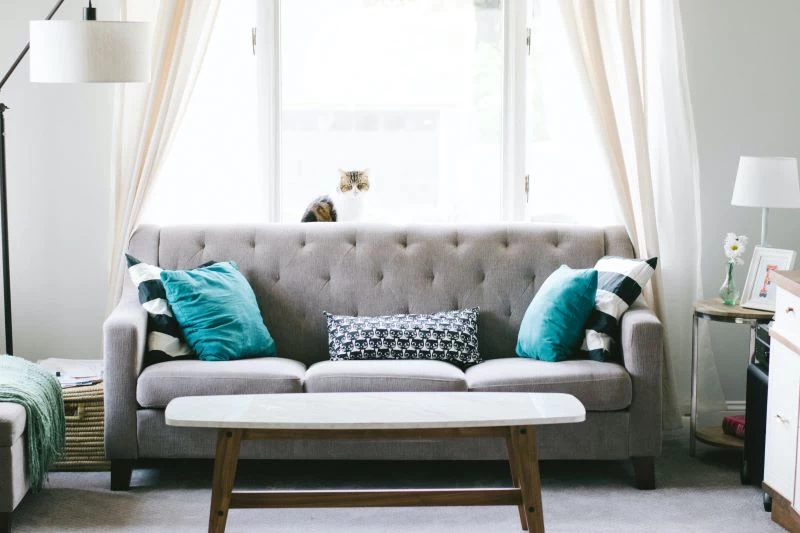
How to Test a Frame in the Store (Without Getting Kicked Out)
Seriously, don’t be shy about this. A good salesperson who believes in their product will expect you to do these tests. If they look at you funny for touching the furniture? That might be its own red flag.
- The Lift Test: Grab one front corner of the sofa and lift it about six inches off the ground. The other front leg should lift up almost immediately. If it takes a second to catch up or if the frame visibly twists, it’s weak. Pass.
- The Wiggle Test: Grab an arm and the backrest and give it a good shake. There should be zero wobble or creaking. A solid frame feels like one solid, immovable piece.
A quick pro tip: Ask about the joinery. The best frames use corner blocks that are both glued and screwed into place for reinforcement. You’re looking for signs of real craftsmanship, not just a bunch of staples holding things together.
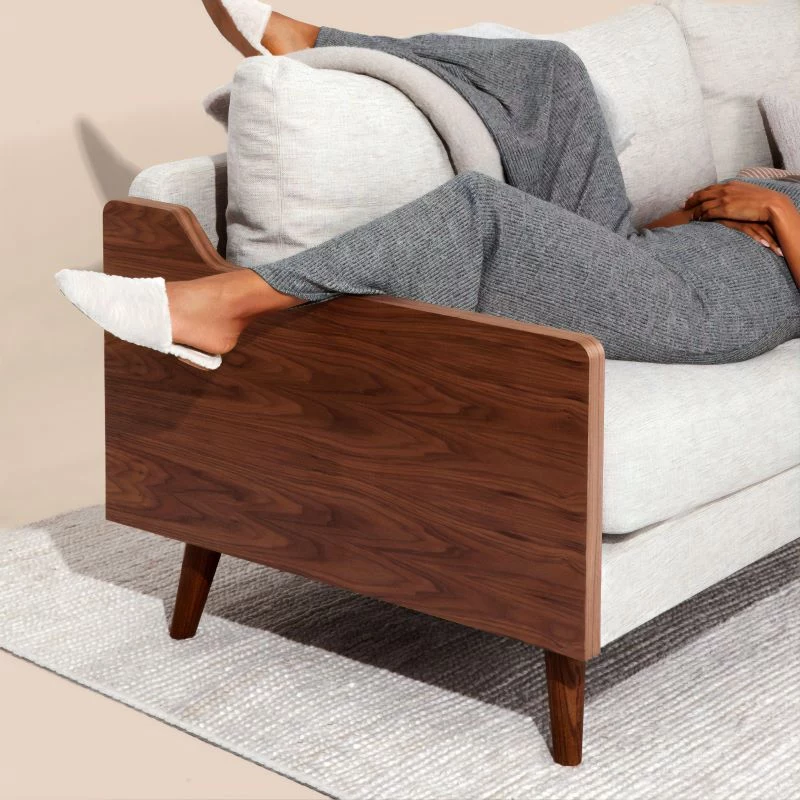
The Suspension: What Keeps You From Sinking
The suspension is the network of springs or webbing that sits under the cushions. It’s the difference between supportive comfort and feeling like you’re sitting in a saggy hammock after a year.
Let’s talk about the big three:
- Best of the Best: Eight-Way Hand-Tied Springs. This is the traditional, high-end method you’ll find in heirloom-quality furniture. It’s a labor-intensive process where each spring is tied to the frame and surrounding springs in eight different directions. This creates an incredibly supportive and durable web that distributes weight perfectly. It’s pricey, but a sofa with this system is absolutely worth reupholstering down the line.
- The Reliable Workhorse: Sinuous Springs. This is the most common system in good-quality, mid-range furniture, and it’s a great option. These are S-shaped steel wires that run from the front of the sofa to the back. For good quality, you want to see springs that are close together (just a few inches apart) and feel firm. They should be secured with padded clips to prevent squeaking.
- Use With Caution: Web Suspension. This system uses stretchy bands of webbing across the frame. While some high-end European designs use high-tech versions effectively, the webbing found in most budget sofas is a recipe for sagging. It loses its elasticity over time. It’s okay for a sofa’s back, but I would avoid it as the main support for the seat cushions.
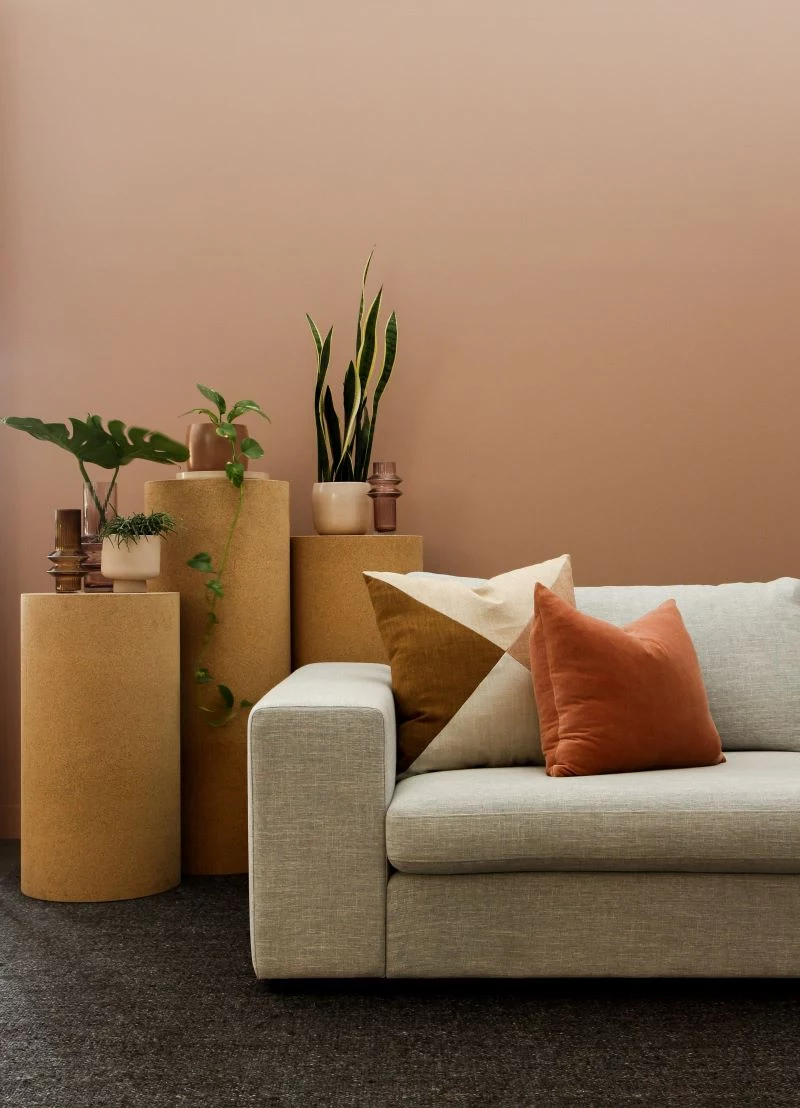
The Cushions: What’s Inside Really Counts
The cushions are where you feel the comfort, but a dreamy, soft cushion in the store can quickly become a lumpy mess if the fill is low-quality. It’s all about density.
For seat cushions, you want high-density foam—look for a density of at least 1.8 pounds per cubic foot. Anything less is likely to soften and go flat within a year or two. Don’t feel awkward asking for the specs! You can just ask the salesperson, “Could you pull the spec sheet for this model for me? I’m curious about the foam density.” A good store will have this info ready.
As for fill types:
- Down/Feather-Filled: Super luxurious and soft, but they’re high-maintenance. You’ll need to fluff them constantly to keep them from looking sad and squashed.
- The Ultimate Combo: Foam Core with a Down Wrap. This is my personal favorite and the best of both worlds. You get a supportive high-density foam core wrapped in a soft jacket of down and feathers. It gives you that plush, sink-in feeling without the constant need for fluffing.
Quick test: Squeeze the cushion hard. Does it feel full and spring back into shape quickly? Good. If it feels light or takes forever to recover, that’s a sign of cheap foam.
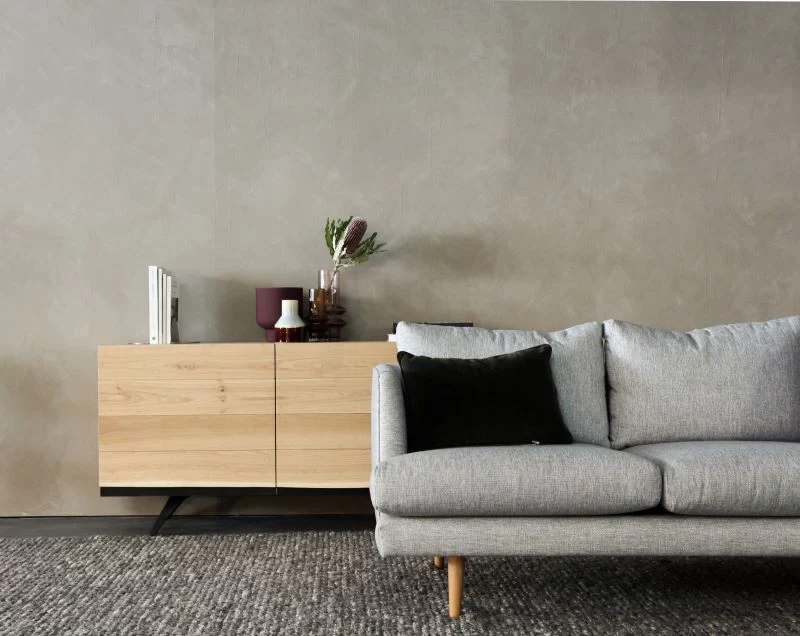
The Upholstery: More Than Just a Pretty Face
The fabric or leather is what takes all the abuse—spills, pets, sunlight, you name it. Its durability is key.
In the industry, we use a mechanical test that measures fabric durability in “double rubs.” Here’s what you need to know:
- For a main family sofa, look for a fabric rated for at least 15,000 to 30,000 double rubs. This is considered heavy-duty for residential use.
Again, just ask the salesperson for the fabric’s rub count. If they don’t know, they can find out.
When it comes to materials, if you have kids or pets, consider a performance fabric. These are engineered to be almost bulletproof against stains and spills. I’ve seen red wine bead up and wipe clean off a light-colored performance fabric with just a bit of water. They’re a game-changer for real life.
And a quick word on leather… it’s fantastically durable, but you need to know what you’re buying. Top-grain or full-grain leather is the real deal and will age beautifully. But please, I’m begging you, avoid bonded leather. It’s not real leather! It’s a mix of leather scraps and polyurethane that will peel and flake off in a year or two. It looks like the sofa has a terrible, patchy sunburn. It’s a complete waste of money.
Budgeting: What You Should Actually Expect to Pay
A good sofa isn’t cheap, but think about cost-per-year. A $1,200 sofa that dies in three years is more expensive than a $3,000 sofa that lasts for fifteen.
Let’s be real about price points:
- Under $1,500 (The “Looks Good For Now” Tier): At this price, you’re likely getting a frame made of soft wood or particleboard, a basic web or sinuous spring suspension, and lower-density foam cushions. It might look great, but it’s not built for the long term. Expect it to show wear and tear within 1-3 years. You’ll find these at big-box stores or mass-market online retailers.
- $1,500 – $3,500 (The “Sweet Spot” for Most Homes): This is where you start to find real quality. You should expect a kiln-dried or engineered hardwood frame, a sturdy sinuous spring suspension, and high-density foam cushions. This is a solid investment that should last you 7-15 years with proper care. These are common at dedicated furniture stores and quality online brands.
- $4,000+ (The “Buy It For Life” Tier): In this range, you’re paying for top-tier materials and craftsmanship. Expect a kiln-dried hardwood frame, eight-way hand-tied springs, and high-end cushion fills like a down-wrapped foam core. These sofas are built to last for decades and are worth reupholstering when the fabric wears out. You’ll find these at high-end showrooms and through interior designers.
Good to know: If your budget is tight, always prioritize the frame and suspension over the fabric. I’d much rather a client buy a $2,000 sofa with a rock-solid frame and a simple, durable polyester fabric than a sofa at the same price with a flashy design but a cheap pine frame. You can always reupholster a great sofa, but you can’t fix a broken frame.
The Delivery Path: The Step Everyone Forgets
This is SO important. I once had a client’s custom 10-foot sofa show up on delivery day, and we discovered it wouldn’t fit in the building’s elevator. Or the stairwell. It had to be sent back. It was a costly and heartbreaking mistake.
Before you even think about buying, grab a tape measure. You need to measure:
- Every doorway height and width
- Every hallway width (especially at turns!)
- The interior of any elevators
- Stairwell widths and the ceiling height at the tightest corner
Write it all down and bring it with you to the store. It’ll save you from a potential disaster.
Your Quick-Reference Sofa Shopping Guide
Okay, that was a lot of info! If you’re heading out to shop, just take a screenshot of this list. It’s your cheat sheet for finding a quality piece.
Physical Tests to Perform in the Store:
- The Lift Test: Lift a front corner. Does the other leg lift immediately?
- The Wiggle Test: Shake the arms and back. Is it completely solid?
- The Cushion Squeeze: Does the cushion feel dense and spring back quickly?
Key Questions to Ask the Salesperson:
- “What is the frame made of? Is it kiln-dried hardwood?”
- “What kind of suspension system does this have?” (Look for sinuous or eight-way hand-tied).
- “Can you tell me the foam density for the seat cushions?” (Aim for 1.8 lb/ft³ or higher).
- “What is the double rub count for this fabric?” (Aim for 15,000+ for main sofas).
Take your time, do your homework, and trust your gut. Your home and your comfort are worth the effort of finding a sofa that’s built to last. Happy hunting!

